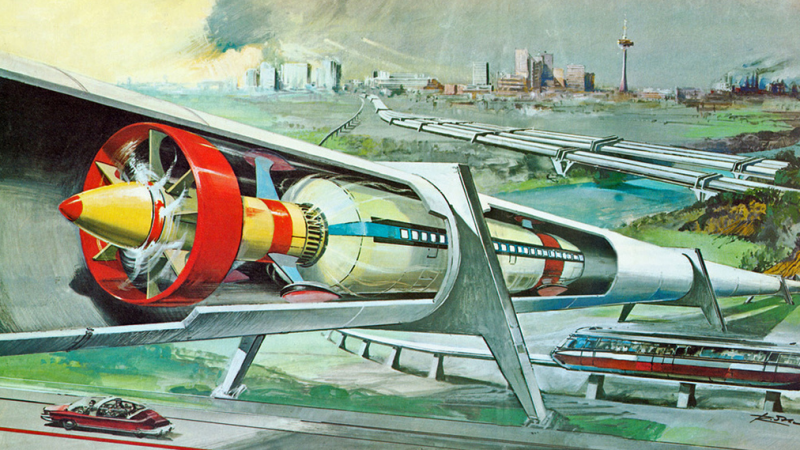Chris C. Anderson
Business Insider
July 16, 2013

Even though Elon Musk will officially release his Hyperloop design on August 12, we already think we know what it is and that it could change the world.
Musk describes the hyperloop as something that is a “cross between a Concorde, a railgun and an air hockey table,” and that it could go from San Francisco to New York City in 30 minutes.
Sounds like something straight out of a science fiction story right? Well, that’s because it is. Even before Rand Corporation scientist R.M. Salter published a 17-page report detailing how something like the Hyperloop — or electromagnetically levitated and propelled cars in an evacuated tunnel — could be a reality in 1972, famed science fiction author Robert A. Heinlein wrote about “vacutubes” in his 1956 story “Double Star.”
From “Double Star”:
“We hit the sub-basement and went at once to the express tubes. A two passenger capsule was just emptying; Dak shoved me in so quickly that I did not see him set the door combination… The few minutes we had been crammed in the vacutube had been long enough for me to devise a plan…”
Other science fiction greats like Arthur C. Clarke and Larry Niven (1976’s “A World out of Time,” portrayed a gravity-assisted subway) also featured similar ideas on transportation.
And neither they nor Heinlein were the first. The earliest mention of travel by tubes in science fiction could be Michel Verne in the 1888 story, “An Express of the Future.”
The story imagines riding air-driven carriages in submarine tubes from Boston to Liverpool, England in 2 hours and 40 minutes and reaching speeds of 1,800 kilometers per hour.
